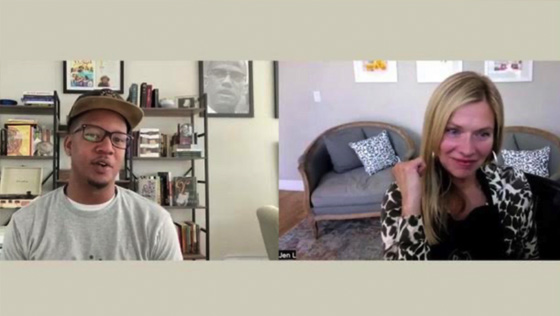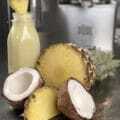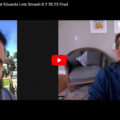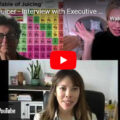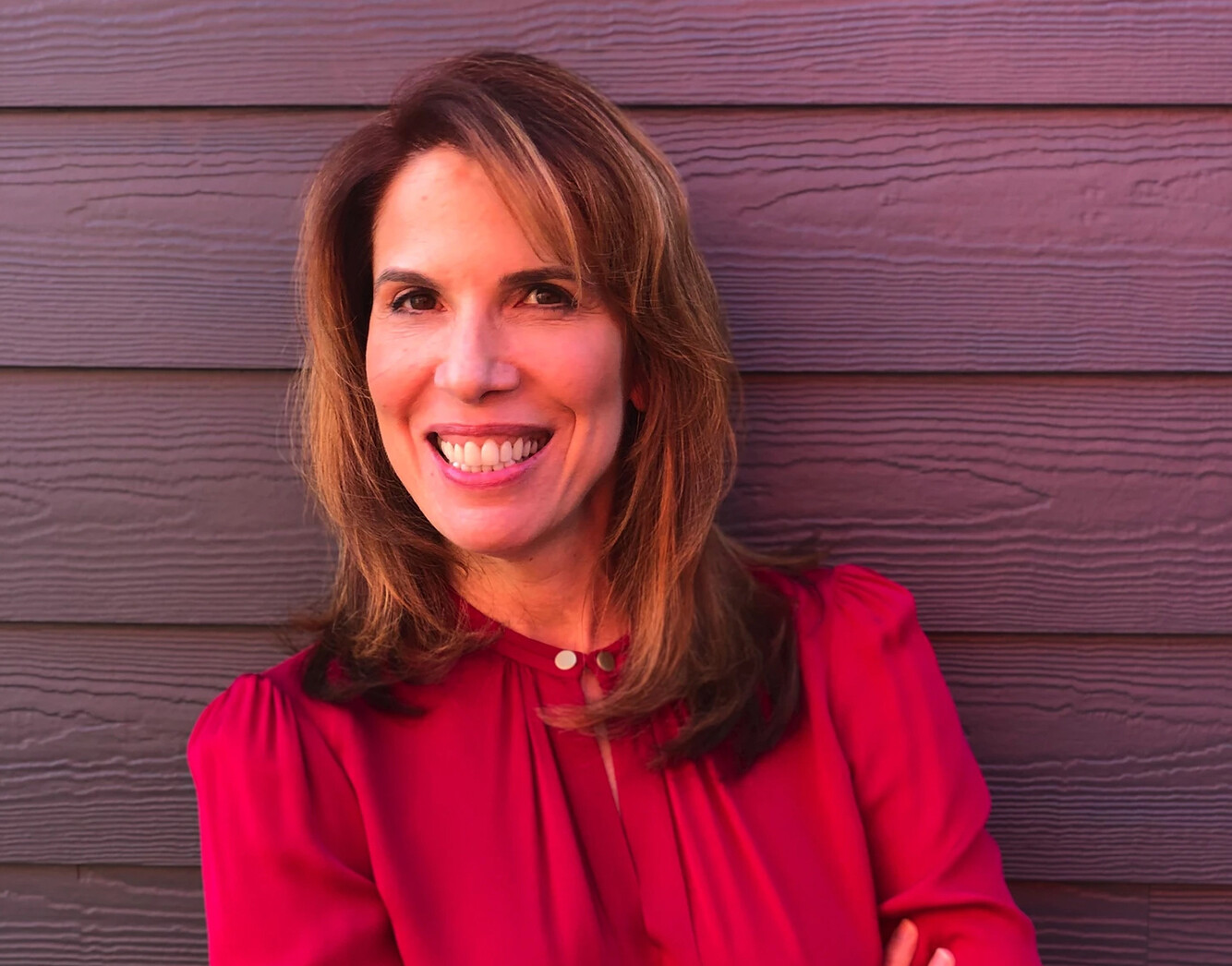“We all deserve to be well. Being well is a human right and should be treated as such.” – Quentin Vennie
If you read through our blogs and spotlights you will find many ways that juicing supports our physical health. There have been movies about juicing and how it transforms people’s physical lives for the better. But today, we are talking about mental health. As Quentin speaks to, in our interview, if juicing can help with physical health, maybe it can help with mental health. Based on his experience (and mine), the answer is an inspiring yes.
In a blog by Ilene Ruhoy, MD, Ph.D., co-creator of the Periodic Table of Juicing, we learn that phytonutrients found in fruits and vegetables help improve our neurotransmitters. These same neurotransmitters balance hormones, improve mental clarity, and repair gut function (which in turn changes the brain). But our interview with Quentin brings this concept to life. He shares his story, we talk about his book, Strong in The Broken Places, Equitea, his business inspired by his son, and the trinity of health that allowed him to heal and be a hero to so many.
I hope you enjoy this interview. Jen
Today I am joined by Quentin Vennie, a wellness and mental health advocate, author of the best-selling memoir “Strong In The Broken Places” and visionary entrepreneur. Quentin’s notable work as the Founder and CEO of Equitea has established him as a guiding force in the realm of holistic wellness. We’ll delve into his personal story, exploring his struggles with addiction and poverty. Specifically, how these experiences have influenced his perspective on life, growth, and the pursuit of well-being. We also dive into his journey with juicing and how he has grown to share this passion with friends and family, creating a routine that he can enjoy with his loved ones.
JL: Hello, everybody. This is Jen here from PURE Juicer. This is really a special day for me. I have Quentin Vennie here, who I have been following closely for a couple years now. He is the founder and CEO of Equitea. He is also a wellness and mental health thought leader. I’m so thrilled to have him here. He is the father of six kids. He is from Baltimore, but lives in LA now, but forever Baltimore. And a little bit of Seattle, which we might talk about later. But Quentin, thank you so much for being here, and welcome.
QV: Thank you so much for having me.
JL: Oh my gosh, I’m a little starstruck from everything that you wrote in your book, which is “Strong in the Broken Places.” I wanna make sure that that comes out first. It’s a book that I read maybe last year, but I kind of use it too as a reminder for me about the importance of what you write in the book and how it applies to everybody. But anyway, it’s really good to have you here, and “Strong in the Broken Places” is his book.
QV: “Strong in the Broken Places,” it was a labor of love, you know? It was an incredible blessing and opportunity to be able to work on something like that and to share my life, especially, you know, it was a life that for a very long time I didn’t find much value in. So I didn’t think that anybody else would find value in it. But it’s been an incredible anchor for me. So thank you for picking it up, for supporting it, for reading it, for sharing it, and for this conversation.
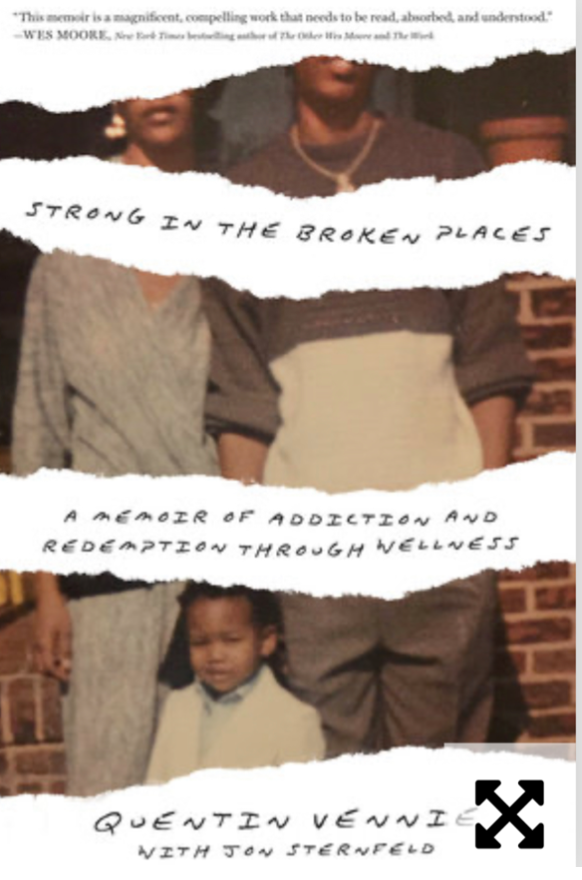
JL: Thank you. I thought it would be good to maybe start a little bit with your story, and then we’ll dive into some of the tools that you have in here. And then we can talk a little bit more about other things after that. I have so many questions.
QV- No, of course. My story, it’s important to note that it’s still being written, which I love, right? You know, the progress, the possibilities that exist. But to give a brief synopsis, I was born and raised in Baltimore, as you mentioned. Baltimore forever. Raised by a single mom. My father was addicted to drugs, so he spent a large portion of my life and childhood in the streets and in prison. A victim of the heroin epidemic that Baltimore was known for in the ’80s and ’90s. I went to schools that were populated by individuals who didn’t look like me, so at a very young age I learned what it felt like to be othered, to be racially profiled, to have my history and my value ripped from me, or the attempt to have them ripped and stripped from me. I went on to be diagnosed with anxiety, generalized anxiety disorder, panic disorder, major depressive disorder, PTSD, spent two years fighting an addiction to anxiety pills. I attempted suicide twice. I survived an accidental drug overdose. I struggled with alcohol. But through the modalities of yoga and meditation and juicing and, the ritual of tea and gardening, I was really able to find a place of sustainability, of healing, and of purpose.
JL: I feel like I would not do this interview service if I wasn’t really real about this. And, I mean, putting juicing aside, you’ve walked this hero’s journey of having sort of a foundation ripped from you and having to look within to find strength. And I know that your mother was there for you in a lot of ways, and I know that there were educators that wanted to be there for you as well. And that’s wonderful, but it doesn’t take away what you went through and how challenging that was and to hit that bottom that I am so grateful for, that you are still here, that you are able to find something that brought you back to yourself. I mean, it truly is the hero’s journey because you’ve not only brought yourself back, but now you’re giving it back to others through your book, through your speaking engagements, through your business, Equitea. It is the hero’s journey.
QV- Thank you so much. That’s truly humbling. I’ve never really heard it put that way, so I really appreciate you putting words to something that I feel, right? I mean for me, it was my life. And, I’ve been to hell and back, you know? I feel like it would be a disservice of my presence on this planet to hoard that and not make it accessible. I’m a firm believer that a shared experience can be a saved life. And if it weren’t for the likes of other individuals that came before me, who’s to say that I’d even be here? And so I think us really sharing our lived experiences and our shared humanity is the bridge and pathway to finding that level of healing that I think we all deserve.
JL: Well, and I think that as a man, that being sensitive is not always looked at as a strength. And I can relate to the sensitivity and how much the world impacts me. And when you talk about getting back to nature, to movement, to meditation, to these things that quiet this crazy world that we’re in, for you to find that and have it healing, I know I can really relate to that because there was no drug, or whether it was legal or not, that really helped me the way those pieces have helped me. Do you wanna talk about maybe the trinity of wellness that you speak about in the book?
QV- Yeah. I talk about yoga, meditation, and juicing. For me, it was my trinity that ultimately got me away from prescription drugs, got me outside of my addiction, gave me something else to put that addictive energy into. I’m a firm believer that the addiction doesn’t go away, we just find other things that take its place. And for me I used to call myself the Green Juice Junkie. That was my thing. It was every morning, every afternoon, every evening. And so yoga helped me get into my body. Helped me to discover who I was physically. What I love about the practice is that it’s called a practice, right? It’s not yoga perfect, it’s yoga practice. And so it always gave me something more to look forward to. I would never, and I will never, conquer yoga, right? Like, I can do a perfect bench press, but I will never conquer yoga, right? It’s always a journey. So it’s really my metaphor for life. Meditation helped me to really find grounding and find this spiritual connection with a higher purpose, a higher power, with universal energy. And then juicing gave me everything that I was lacking from a nutrition standpoint, as well as the practice of juicing, right? Like, it wasn’t really going to the store and buying juice. It didn’t do it for me. I needed to go through that process. I needed to know everything that I was putting into it and really make it my own. It was like, I always say, I’m drinking the sun, right? And like, what better way to fuel your body than to drink the thing that helps give us life?
JL: I love it. For yoga, you probably can do this. Can you do shoulder stands and handstands?
QV- I can do a shoulder stand. I can do a handstand against the wall. I can do a shoulder stand, forearm stand, headstand. Handstand, I gotta be up against the wall. I can’t get my hips to go in the direction without tumbling over yet.
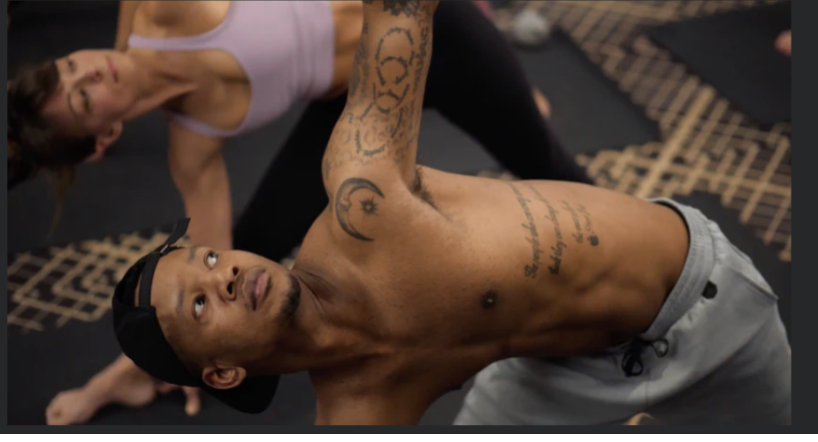
JL: Okay. I have not been able to do that for some reason. I gotta keep my feet on the ground for some reason. I just can’t let it go. For meditation, do you meditate in the morning? Is that sort of your practice, or whenever you can kind of a deal?
QV- It’s usually in the morning. And today, I’ve been up since five this morning, working and running. So I’ll probably take a good 10 to 15 minutes to ground myself before going through the rest of my day. And then I like to get into that practice. I would say it’s less of a meditation in the evening. For me, it’s more visualization. I’m a firm believer that what we input into our minds and our psyches at night, we go into this outer body experience when we sleep, right? Like, the cells regenerate, our body heals, all of this. What also happens is we start to put into our souls, our cells, our spirit, all the things that we wanna manifest, right? And so when we wake up, we’re really in a space of like, chasing after that thing. I’m a firm believer in manifestation, and that’s worked for me for many, many years. And so at night, I turn off all electronic devices. My daughter sleeps with us, so we turn on the cricket sounds. The room is pitch black, and while she’s going to sleep, I’m breathing, but I’m consciously thinking of what it is that I wanna manifest, whether for that moment, for my life, for my children, for my business, for the next day, for the next three months, whatever it is, and I hold that. I embody it as if it already exists, and then I go to sleep with that on my heart.
JL – I just listened to a podcast. I really love Bruce Lipton, who’s been working on health and biology. He’s kind of into this quantum biology. But he was saying that when you’re between the ages of one to seven, your brain is sort of in theta wave, which is a hypnotic state. And the only time you get that as an adult after that is right between deep sleep and awake. And so one of the things that he said is if you want to change the habits that you formed, or the thought processes from that early phase in your life, that that is the best time to do it. So you’re-
QV – I love it.
JL – once again intuitively knowing that. But I thought that was amazing. I thought that was amazing. And a little scary.
QV – Oh yeah, absolutely. But I think it’s beautiful ’cause it’s all a part of this journey, right? Like, so often in our lives we feel so disconnected because of societal standards, right? Whatever you wanna call it. We’re often disconnected from ourselves, and we’re disconnected from others. We’re disconnected from the Earth. As I’ve gotten older and gone through this journey, like, I realized how connected we all really are. I’m often looking for ways to continue to expound upon that because the more I learn and can execute in my life, then the more I can then teach and share with other people, how to do the same thing.
JL: Yeah. Let’s talk about Equitea because it seems like this whole process led to this business. And part of what I love about it too is that you’re finding ways. I mean, I know my son… Well, I’ll let you talk about it, and then I’ll add to it. But let’s talk about Equitea and how it was formed and how it’s going.
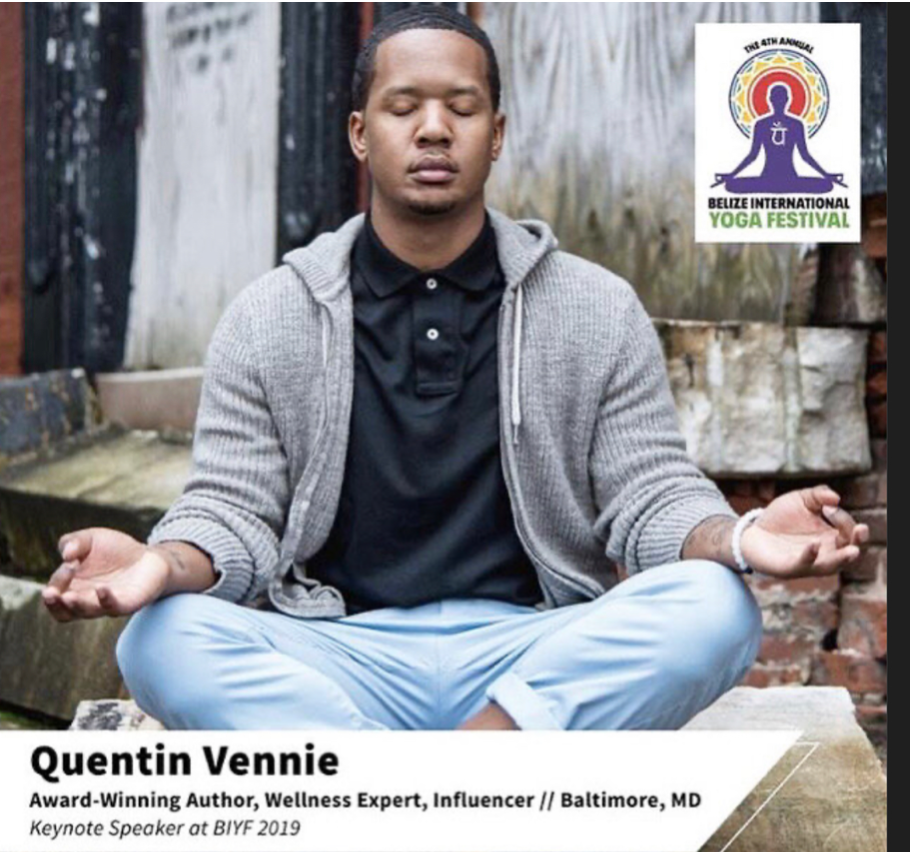
QV – No, yeah. Equitea was created out of necessity. My son was diagnosed with ADHD. We had done everything from pulling him out of traditional schools. He would do yoga and meditation. He was juicing. He was on a gluten-free diet. I mean, behavioral therapy, occupational therapy, talk therapy. And he was still struggling. And so his neurologist suggested he was struggling primarily in school, not in life. He’s never had behavior problems, always had a difficult time academically. And his neurologist has suggested that he drink tea, and green tea specifically. And the idea was the L-theanine, which is naturally occurring in green tea, with the small amount of caffeine would actually mimic the reaction of Adderall, right? But without the risk of dependency or any negative side effects. It would give him a calm focus. But the problem was all of the teas that we would buy at conventional grocery stores, and even natural grocery stores, they were very low quality, had very minimal nutritional value, didn’t taste very well. And so it became a struggle trying to get him to drink these teas. And so my wife and I kind of made the decision that if we were going to even see if this was a viable option, we needed to figure out how to make green tea palatable to a nine-year-old without adding a bunch of sugar and other additives. And so it really started with a lot of trial and error and experimenting with different teas and botanicals and learning as much as we could about teas and countries of origins and flavor profiles. And kind of became a “Dexter’s Laboratory” of sorts and figuring out what worked and what didn’t. And we landed on a blend. It worked for him. It was something that was a part of his day-to-day ritual and routine, became a part of our family’s ritual and routine. At the time, I was an executive working in nonprofit. My wife was an executive. And so I ultimately stepped away from my job due to some racial issues I was dealing with at the time and made the conscious decision to make available to other families what we had created for our own, right? Very similar to my own mental health journey, I realized early on that if I’m struggling with this, that I know countless other families are struggling with it, right? Whether they were struggling directly or with a child, a grandchild, a cousin, a best friend’s child, we’re all impacted by it, right? And so we realized that because we had to create something that there was a need. And we wanted to fill that need. And so Equitea is a mental-health based company. We use adaptogens for all of our teas, for functionality and efficacy. And our aim is to de-stigmatize mental health, democratize the beverage space, while also making accessibility to mental health products more viable and more equitable.
JL: And how is it going? It seems you’re doing incredibly well. You’re getting recognition and support. And I know we love it too. My son has given up the yerba mates that are all the rage, and he’s actually shifted over to Equitea. We’ve tried adding juice to it. But I will say, to anyone out there watching this, don’t add juice. It’s already perfect as it is. And I thought it would be fun to do that as a collaboration, but I’m like, that was my biggest lesson. I’m like, nope, there’s no collab required. Just drink it the way that you made it ’cause it’s perfect as it is.
QV – Thank you so much. Well, it’s interesting. I need to get you some cases of, we just reformulated. So it’s the same formulation, but we enhanced some flavors. It’s slightly sparkling now.
JL: Oh.
QV – And so we finished production a few weeks ago, and we’ll be launching a new flavor. It’s a peach ginger white tea that we go into production on Thursday. So I’ll make sure you and your son get some ’cause, what we had before was incredible, and this is even better. So yeah. But thank you for that. And it’s going well. We’re sold nationwide in 400 Sprouts. We ship nationwide via our website equitea.com, and we’re gaining some great traction and interest from a few other major retailers. And so we’re in early conversations, but hopefully I’ll have some more exciting news to share in the weeks to come.
JL: Amazing. Amazing. Let’s talk a little bit about juicing as well. So you had this green juice. Can we talk about your green juice? And here’s an example of green juice.
QV – My green juice, when I first started juicing, was interesting. It was the day that I was still taking pills, I was still addicted to pills. And I had just gotten out of the hospital, and I was like, “You know what? I’m not gonna take these pills anymore.” And I ended up being rushed to the emergency room ’cause what I didn’t realize is the amount of pills that I was taking was so high that stopping could have caused me to die, right? And so the one thing that was killing me was also keeping me alive. So it was a bit of a challenging thing to conceptualize, right? And so I came home, and I was like, “All right, I have to figure out how to do this.” I wanted to find other people who had healed themselves from different things. And that led me down a path of watching “Fat, Sick and Nearly Dead” with Joe Cross, who I ended up meeting and getting a chance to actually like, hug in person because he contributed to him sharing his story. Again, a shared experience can be a saved life. Him sharing his story led me down the path of thinking that it was for me. Though he was battling obesity and an autoimmune disease, and I was battling anxiety and prescription drug addiction, the possibility existed. Right after that, I saw “Crazy Sexy Cancer” with Kris Carr, who was fighting stage four cancer using things like enemas and veganism and yoga and meditation and juicing. And everything that I was watching at the time, the commonality was juicing. And so it was like two in the morning. I was at my apartment in Cockeysville, which is a suburb of Baltimore County. And they have a 24-hour Walmart. And I went out and bought a Jack LaLanne juicer from Walmart at two o’clock in the morning. I went out to the produce section. I bought a ton of fruits, vegetables, things I’d never eaten before. It was like, screw it, I’m gonna try to juice it. And I didn’t know how to juice properly, so I would juice every ingredient individually and put them into separate containers. And then I would take a cup, and I would pour each one in individually until it got to the flavor that I wanted.
JL: That’s good.
QV – Most of it was, I would say for the like, the first two weeks was trash. I was like, “Whoever’s drinking this is like, crazy. I don’t know if I can do it.” And then I started watching YouTube videos, how to juice properly. That green juice with the kale, spinach, celery, cucumber, ginger, apple, that was the first juice that I actually learned how to make properly. I adjusted the recipe a little bit to fit my palate, but that juice was the foundational juice that I drank to help me get off of prescription drugs. It also helped to reduce the withdrawal symptoms.
JL: I think you mentioned it was trash in your book too. I wanna say that I read that.
QV – It was awful. I was like, “This is disgusting.” I’ve never liked salad and I hated the juice even more. I was like, “I may as well just eat the salad.” But then I knew that if it was working for other people, I knew that I was screwing it up, and I needed to figure it out. And so that’s what kept me going. And then I was like, “Oh, I can make this taste good, and it’s also making me feel good.” Like, eureka.
JL: Yeah.
QV – A stronghold. Yeah.
JL: I love that green juice. I’ve been replacing the spinach with green cabbage, and instead of celery I’ve been doing a lemon. But lemon or lime is good. And I think that one is great. I actually tried putting a little bit of Stevia leaf in today ’cause a friend of mine is growing the Stevia plant. And I like to chew on the leaf, but I don’t think it worked very good in the juice. So it’s still a work-in-progress. I would call that one a trash juice as well. But I had to try it.
QV – It was probably better than the first juices I made, I guarantee you. I couldn’t even finish them. I was like, “Look, I’m spending all my money on this produce. I’m wasting it. Like, this is awful.”
JL: Did you notice a difference right away? I believe when we talked once you said you noticed a difference pretty quick.
QV – Once I got the hang of it and really started to like it, I used to get like, and still sometimes I’ll get it, depending on what juices I make, I’ll get what I call a juice buzz. Where my body is absorbing so many nutrients at one time that like, I’ll feel intoxicated. And so I did. I felt the difference immediately. Again, it helped with, you know, when people say, “Oh, your withdrawal symptoms,” I mean, I quit taking pills and smoking cigarettes in the same year all from doing yoga, juicing, meditation, and my evening cup of tea. And so two of the things that are typically the hardest things to quit, I was able to do them successfully without ever really remembering any withdrawal symptoms, because I was drinking 38 to 62 ounces of juice every day.
JL: Yeah. I worked at Free & Clear in Seattle and learned it’s a smoking cessation program that is also run by states. And it’s harder to quit smoking than it is heroin. And so to do that without medication, those two, is amazing. You also mentioned there was something about the whole process of juicing. And, I mean, that’s actually something that I love, and Hillary Phelps talks about that too. It’s the meditation of the vegetables. Not only the physical, but the smells and everything.
QV – Smell it.
JL: Do you wanna talk about that at all, or?
QV – It’s very meditative. As someone who struggles with anxiety, it’s one of the things that has always been a practice of mine. If I’m driving and my anxiety starts to get triggered, for whatever reason, I need to call somebody. I usually call my wife or my mother or a friend, whoever’s available, so I can talk. It’s a distraction. For me, juicing doesn’t serve as a distraction, it serves as a practice. It’s a practice all in its own. And so, like you said, the process of watching the juice come out, watching the vegetables get pressed, the smells associated with it. The whole house will smell like cucumber and it’s such an incredible sensory experience all around. For me, it makes the juice taste that much better. I get my children involved. They’re a part of the process too. Every time I’m juicing, somebody will come over with a stand and like, hey, can I press it down? Can I push the button? Can I hold the cup? It become a family activity.
JL: I hear that a lot. I hear that juicing has become a family activity. And what a wonderful thing to pass down and what a wonderful thing to include with kids because disease is happening earlier and earlier.
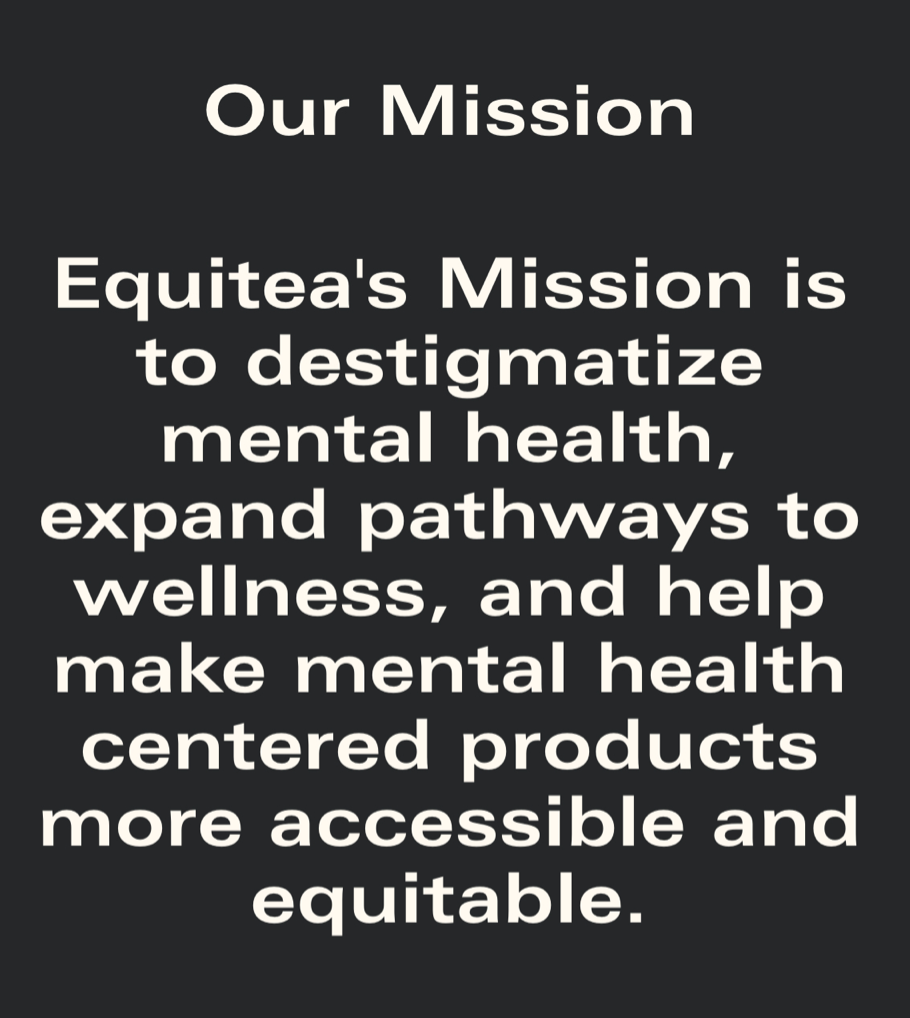
And so if you can maintain that gut health and maintain cellular strength at an early age, the breakdown in the repair is less. We still see things like, live it up in your 20s ’cause come 30, 40, 50, it’s all downhill. And it’s like, how about maybe we incorporate some things that don’t break us down so fast that are cool and beautiful and wonderful? It doesn’t mean that healthy has gotta be boring and too green. Like you said, it doesn’t have to be trash, it can be beautiful and fun and a way to bring people together. That’s me, though.
QV: And delicious, right? I’ll turn 40 this month. People still don’t think I’m outside of my 30s. Being healthy is the cool thing to do. It’s like you pay for it now, or you pay for it later. Either way, you’re gonna pay for it. I’d rather be in my 40s and still be able to do my yoga practice and walk and hike and play with my kids and run and play basketball on the court. I know people that are 35 years old that can’t do it. My daughter is two years old. She starts her day with a green juice. She starts her day with a cup of tea. Now we’re using E3Live. The whole family. It’s the way we are now, right? And so, being healthy is the new cool.
JL – And our bodies thank us. I mean, how did being healthy not be cool? That’s what I don’t understand. How did that not be cool? I don’t know. But it’s nice to see generations smarter, than my generation was, where that was not cool. It was how bad can you treat yourself and then get up and do whatever you do. So I know. Yeah.
QV: For me, in my culture and where I came from I grew up in a food desert. We didn’t have access to fresh fruits and vegetables. When we went to the grocery store, our kale looked like the drug addict that was on the corner. Slumped over and dark. It’s like, why would I ever wanna buy that and put that into my body. And when we did eat vegetables, it was like kale and collard greens. And we were cooking it, mixing it with a bunch of salt and seasonings and turkey necks and ham hocks and all of these other things to add flavor because that’s ancestrally what we had. And so we made do with it, right? But for us, it was more of an accessibility thing. And so when I got older and was able to graduate from my neighborhood grocery store to a natural grocery store, or to be able to get organic or whatever it may be, the door opened up. And because it opened up for me, I was like, “Okay, I need to introduce this to everybody else.” So I had my mom drinking juice. I had my father drinking juice. I had, my uncles and aunts and cousins drinking juice. It was a thing. I like to think that, because of my journey, I had a hand in being able to offer that and provide that to other people. And now I’m doing the same thing, still with juice, but also now with tea. So it’s a great full circle moment.
JL – I have a sibling who has ADHD that was diagnosed as an adult. So I hope that he starts to drink that too, because there’s plenty of people of all ages that still have it. And I think our young boys also naturally gravitate toward the higher energy and toward a different type of concentration. So I know for my son, he struggled too. And there were many times when people wanted to put him on medication, and I’m like, “Absolutely not. Absolutely not.” I know what my body does on it, and that is a hard no. Until it is destructive to many people, there’s no way. But you found a solution that I never did, so I’m so grateful that you did that. And I hope that more and more kids and parents, ’cause there’s a lot of parents too out there, even if you’re on social media. I’ve pretty much diagnosed myself with ADHD. I mean, all you need is a couple memes that pretty much confirm we all need to drink that tea.
QV – Yeah. And we all need to drink that juice. It is not like the coffee-tea battle. Like, either you love coffee and hate tea, or you love tea and hate coffee. Or you have some people that are kind of in the middle, right? But with this, it’s not an either/or. It’s and/both. We need the juice, we need the tea, we need yoga, we need meditation, we need the sun. These are all things that we need for a holistic, well-rounded way to be well.
JL: Yeah. And I know that you’ve had the juicer for over a year now. And I was wondering, how would you describe the PURE Juicer over the other juicers that you’ve had? I mean, do you find that, yeah, what is your experience with it?
QV: I think for me personally, the PURE Juicer is by far my favorite juicer that I’ve ever had. And I’m not saying that because like, we’re on this podcast. If it was trash, I’d say it was trash. I don’t know how to not be honest. What’s interesting, and quite frankly, I still don’t understand, is how the juice comes out to be so creamy. When you said it at first, you were like, “All right, you’re going to experience a creamy juice.” And I was like, “What the hell is creamy juice? Like, what is this? What does that mean? And I know what it means now. My sister-in-law came over here for a birthday, for her and her husband, and they were talking about how they went out and bought ginger juice shots. And I was like, “From the store?” And they were like, “Yeah.” I was like, “Nah, I got something way better. That’s gonna be trash. Let me make you something.” They’re like, “No, no, no. Don’t go through it.” Listen, it’s gonna take me five minutes, right? I’ve got an apple, I got some ginger. Let me make you this. I made them the shot. They were blown away. We’ll talk about this more offline, but they wanna buy a juicer now. And so everybody that I introduced this to, they know I’m a juicer. They’ve never had juice taste like this before. I will like, literally just press grapes and drink grape juice that is rich and sweet and creamy. And it has the color from the skin. It’s like when you juice with this machine, you know that you’re getting the best of the best from every fruit and vegetable that you put in. It’s a powerful machine. It’s heavy as hell, but it is an incredibly powerful machine that will literally transform the texture and flavor of these fruits and vegetables. It’s incredible the way that it works. I still don’t know how or why. I don’t know the science behind it, but it’s an amazing machine.
JL: We are working on some science around it because if you taste the PURE versus other juice from other juicers, it is thicker. We know that if you press a papaya, ’cause you can, I don’t know if you’ve done that, but you can make papaya juice. So you cut the ends, you cut the middle, take the seeds out, or not. It depends on what you want. But then if you put them side to side, like with the skins, and you press it, the only thing left from the papaya is the skin.
QV – Wow.
JL: So there is something to be said for soluble fiber, which is in juice. And we don’t talk about that because many people tell people that it’s just sugar water. And a lot of juice is sugar water, so they’re right in some instances. But there’s also a level of other fiber. There’s so many more than just soluble or insoluble. So I’m getting to the bottom of it, but I don’t have the science of it yet. But yes, there is something to be said for it. And that fine mesh cloth that strains everything ensures that it is silky, creamy, and very easy to drink.
QV – Yeah, it’s incredible. Like I said, my daughter drinks juice every morning. She’s two. I mean, it’s an everyday thing. We make pops. So we’re not buying strawberry or mango pops in the box from the grocery store. We literally bought molds, and I’ll juice apple, put some strawberry in there. We did peach and grape. We’ve done the strawberry apple. We’ve done a straight up grape. I’ve done grape and pomegranate.
JL: Oh.
QV – And in pops. And all the kids, like, I got them for my two-year-old, and now we gotta get more molds because the older kids want to eat all of them.
JL – I cannot wait for the pomegranate season to come back because I am craving the pomegranates and the cranberries and the grapes. Those three are magic on all levels. Flavor, health, everything.
QV: Watermelon. I mean, I juice the whole watermelon. Like, the rind, skin, everything. And normally in a regular juicer, if you juice all of that, the juice comes out like, really dark and dirty looking. But with the PURE Juicer, it’s still that bright, vibrant color. There’s no oxidation happening, so you’re keeping all of those live enzymes intact. The bioavailability is so much greater, and it makes you want to drink it. It’s not a chore.
JL: Next up, you have to try shaved ice because you can take your grape juice, or whatever juices you’re making with your daughter, and just throw ice cubes into stage one. And you don’t need a grid plate or anything, so keep it without the grid,
QV: Really?
JL: and it’ll shave the ice perfectly.
QV: Just add the grape juice. I’m making it tonight. I’m gonna do it tonight. It’s done.
JL: It’s so good. It’s so good. Please let me know.
QV: It’s incredible. It’s an incredible machine.
JL: I’m so glad you have it, and I’m glad that you’re able to use it with your family. I mean, that is the story that we hear. But I also believe, and PURE believes, that the best juicer is the one that you have. So it doesn’t really matter what the juicer is, as long as you’re taking those steps to give your body what it needs to take care of itself and find balance, which you have demonstrated beautifully.
QV: Thank you.
JL: Yeah. Is there anything else? How can we follow? Do we go to Equitea? Do we go to Quentin Vennie? Like, what are the ways that we can follow up with you for anyone who’s watching this?
QV: Yeah, my Instagram is @quentinvennie, but I do all of my work through Equitea, equitea.com. Instagram, @equiteaco. But wherever you find me, you find Equitea, and vice versa. So either one. Always looking forward and excited to connect with people and continue to build this community of healers, of wellness seekers and practitioners. We all deserve to be well, and being well is a human right and should be treated as such.
JL: Nothing more to say on that. Thank you so much. You are truly a hero for so many of us, and I’m so glad that I know you.
QV: Appreciate it, and glad to know you. Thank you.
JL: Thanks.
Quentin’s journey is a testament to the transformative power of self-discovery and the importance of mental health advocacy. His commitment to sharing his narrative has inspired countless individuals to find value in their own stories. Quentin’s life transformation demonstrates how mental and spiritual healing must come from a place of physical health. His inspiring story gives hope and motivation to all who hear his story and we hope this interview provides that for you.

Medical Disclaimer
PURE Juicer is a juicing company. We are not doctors or medical experts. All content and information on this blog and website is for informational and educational purposes only, does not constitute medical advice, and does not establish any patient-client relationship by using this website.
Although we strive to provide accurate general information, the information presented here is not a substitute for professional advice. You should not rely solely on this information. Always consult a professional in your area for your health questions and concerns before making any professional, legal, medical, financial, or tax-related decisions.
